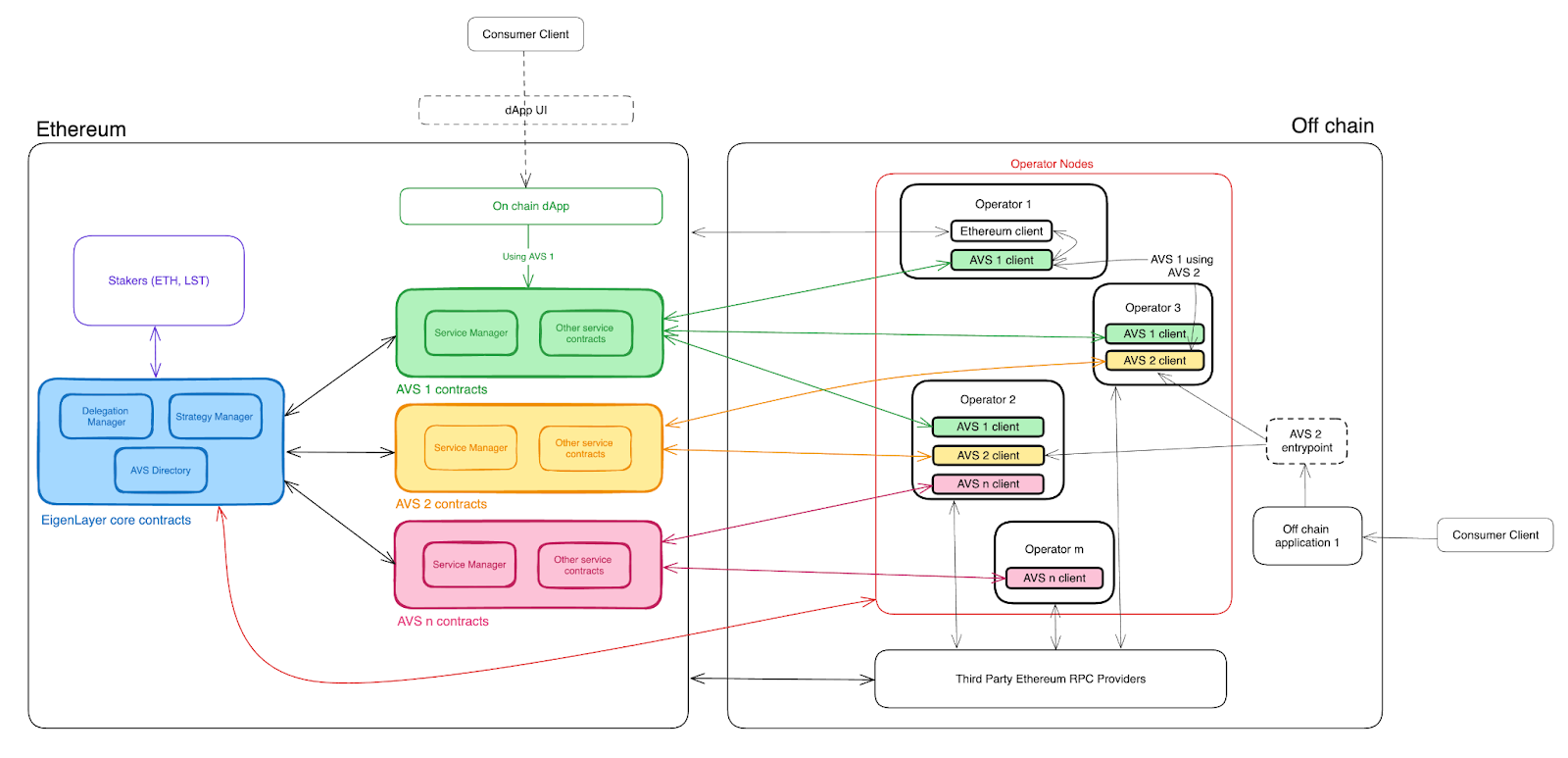AVS Overview
Before diving into what AVSs are and how you can design and build one, check out the Intro to EigenLayer overview to quickly become familiar with what stakers and operators are.
What is an AVS?
An AVS is any system that requires its own distributed validation semantics for verification, such as sidechains, data availability layers, new virtual machines, keeper networks, oracle networks, bridges, threshold cryptography schemes, trusted execution environments and more.
Each AVS has its own set of contracts that hold state relevant to the service’s functionality, such as what operators are running the service and how much stake is securing the service.
Below is a high-level overview of EigenLayer core contracts as well as how an AVS is built on top of it and consumed.

Let’s clarify some of the interactions demonstrated by the above diagram.
- The stakers interact with EigenLayer by depositing assets into the
StrategyManager. To learn more about exactly how this works, this doc provides a deep dive on theStrategyManager. - The stakers also interact with EigenLayer by choosing operators to delegate to. This delegation is handled by the
DelegationManagerand you can find a deep dive explanation on that here. - The operators are actors who run offchain client software that are specific to the AVSs they’ve opted into serving. This client software is independent of the core EigenLayer protocol. There’s a registration/deregistration process operators have to go through with EigenLayer’s
DelegationManagercontract to become EigenLayer operators. Operator registration is a requirement for these operators to opt into AVSs and serve them. Refer to this doc for how registration works. - The dotted lines for the boxes represent components that are optional depending on the interface design.
- Each AVS developer can design and implement its own contracts as they see fit as long as their entry point (canonically called the
ServiceManager) implements the interface expected by the EigenLayer protocol. Specific details expanding on this will be coming soon.
Additional Resources
Visit awesome-avs to view learning resources for building an AVS and the latest community contributions.
Get in Touch
Once you have an idea of what you want to build on EigenLayer, submit an AVS Questionnaire and get in touch with us.